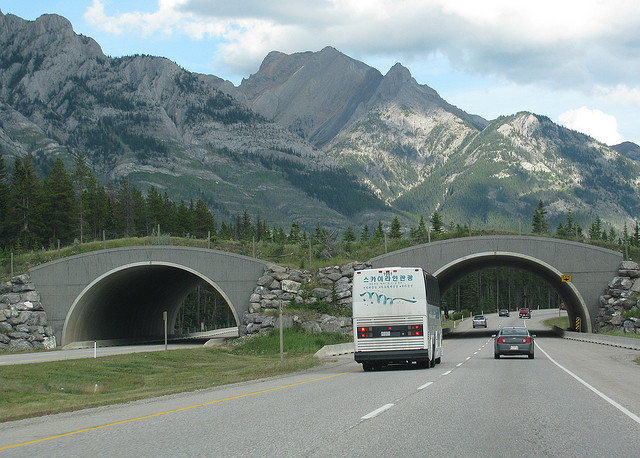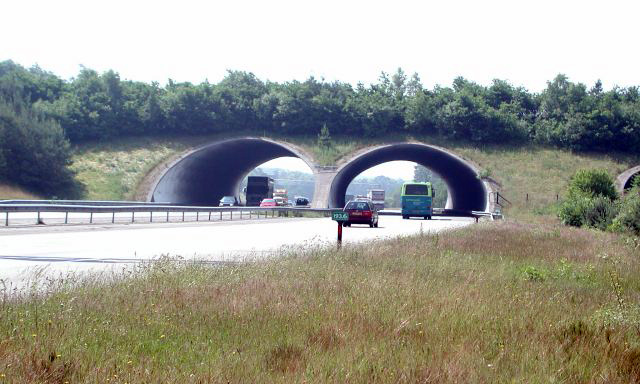World’s Coolest Animal Bridges
Animal bridges, aka ecoducts or wildlife crossings, allow wildlife to cross potential death-traps like highways and are are popping up all over the world

Photo: jlongland
Animal bridges, aka ecoducts or wildlife crossings, allow wildlife to safely cross potential deathtraps, like highways. These nifty creations are popping up all over the world, from German autobahns to New Jersey interstates.
According to Twisted Sifter, a wildlife crossing includes anything that acts as “underpass tunnels, viaducts, overpasses and bridges, amphibian tunnels, fish ladders, culvets and green roofs.” These bridges keep countless animals safe and also help drivers avoid costly and potentially dangerous collisions with wildlife.
Some cool facts:
- The first wildlife crossings were constructed in France in the 1950s
- More than 600 tunnels are installed along roads in the Netherlands to help protect the endangered European badger
- The longest ecoduct is in the Netherlands, which runs 800 meters across a highway, railroad and golf course
- Each year, drivers in the U.S. spend $8 billion on wildlife-related collision damage to cars
- In the US, wildlife crossings have popped up over the past 30 years to help animals as diverse as mountain goats, salamanders, big horn sheep, desert tortoises and Florida panthers and others to cross the road
Some examples of cool animal bridges:

An animal bridge at Banff National Park in Alberta, Canada. Photo: Roswellsgirl

Wildlife crossing on the Netherland’s A50 highway. Photo: Woeste Hoeve

A wildlife crossing under construction. Photo: PDI

Another wildlife bridge in Banff National Park. Photo: Sangudo
More from Smithsonian.com:
/https://tf-cmsv2-smithsonianmag-media.s3.amazonaws.com/accounts/headshot/Rachel-Nuwer-240.jpg)
/https://tf-cmsv2-smithsonianmag-media.s3.amazonaws.com/accounts/headshot/Rachel-Nuwer-240.jpg)